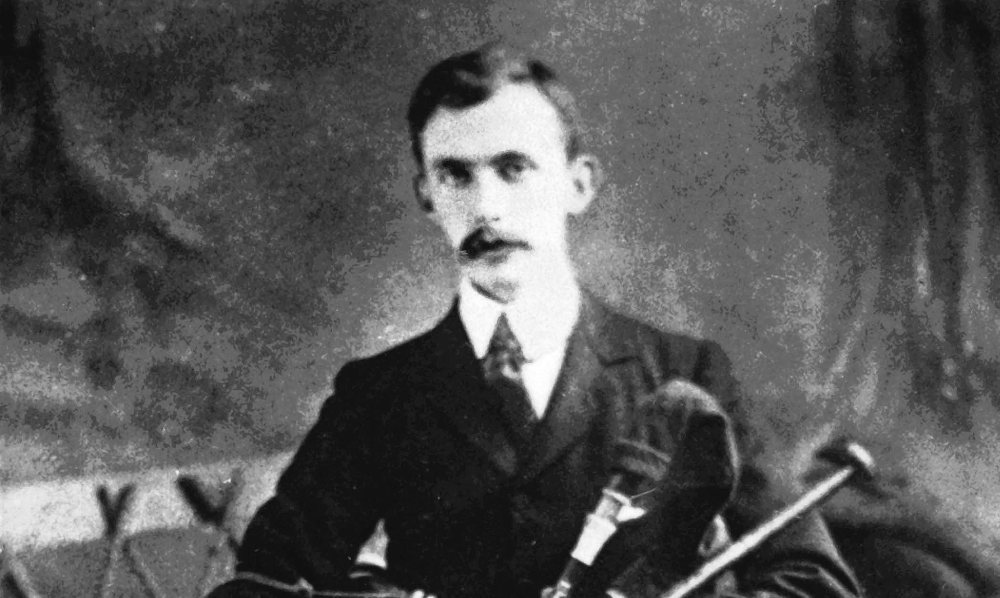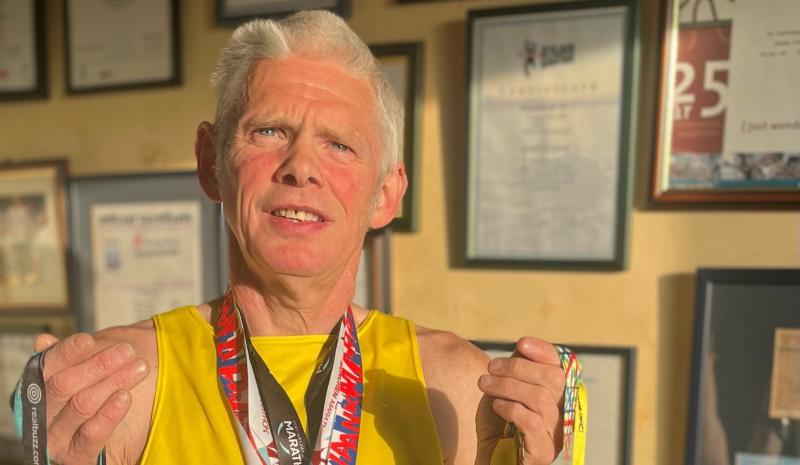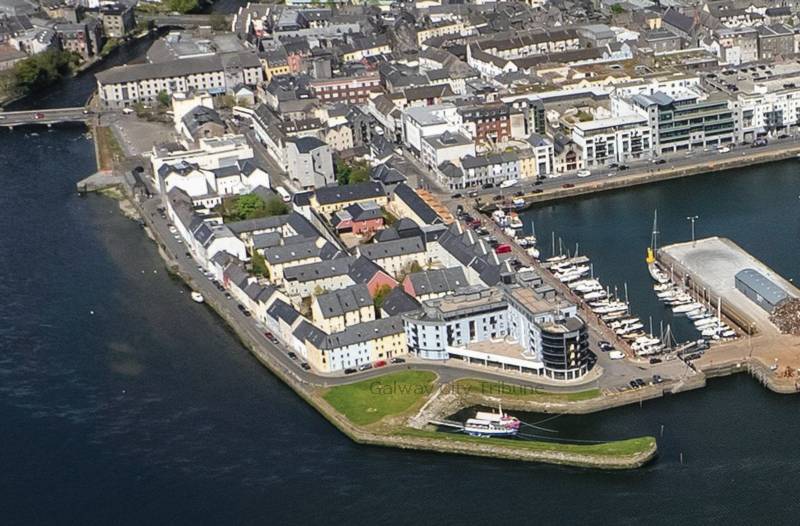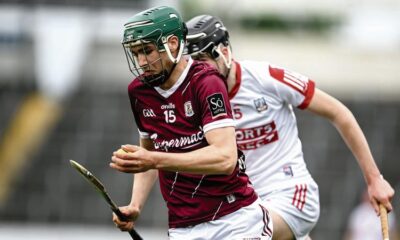News
Festival commemorates Galway-born 1916 patriot and piper

A festival in honour of the only Galway man who was a signatory to the 1916 Proclamation of Independence will be the flagship event next year for the centenary commemoration in the city.
The Éamonn Ceannt Pipers Festival is one of at least 30 events planned for the year following an open meeting to workshop ideas for the anniversary attended by 60 people. So far there is a fund of €100,000 to stage the programme.
Éamonn Ceannt, who was himself a legendary piper, was a founder member of the Irish Volunteers and one of the seven Easter Rising leaders who signed the historic document, which went on to become the basis of the Irish Constitution.
It was proposed by Mick Crehan of the Crane Bar in the West End – home to the Galway Sessions – to stage an international piper’s festival in honour of Ceannt, which was described by Galway City Council’s Gary McMahon as a “peach of a project”.
“The leading uilleann and bagpipers from Ireland, Scotland, Lorient and the USA will be invited to commemorate the life and work of Éamon Ceannt during a week-long festival from June 13 to 19 next year,” explained Mr McMahon.
“The commemoration will include a seminar programme alongside a special exhibition in Galway City Museum; outdoor concerts; street events; an international pipe band parade. Commission of a new work for pipes and string quarter in association with the Contempo Quartet, Galway Ensemble in Resident. This is an event organised locally in Galway with a national and international impact.”
In other signature events throughout 2016, a commemorative stone will be laid a Carnmore to mark the engagement between the Castlegar and Claregalway Volunteers and the RIC, which resulted in the death of Constable Patrick Whelan, the only fatality of the Rising in County Galway. A wreath-laying ceremony will follow at the grave of Patrick Whelan at Bohermore Cemetery.
A host of exhibitions and seminars will be hosted around the city. Schools will be encouraged to get involved in projects, such as the translation of Padraic O Conaire’s ‘Seacht mBua an Eiri’, written after the Rising. They will also get the chance to contribute to a ‘new proclamation’.
A puppet show featuring original music by Teatar Branar called Maloney’s Dream, which centres around the historic events of April 1916, will premiere at the Town Hall Theatre before touring around the country.
A songwriters’ project will feature three singers with Galway connections – Tim Lyons will compose a new song, John Tunney, who works in GMIT will compose a song specifically dealing with events in Galway that week and Sandra Joyce, acting director of the Irish World Academy of Music and Dance in Limerick, will undertake research on existing songs which relate to the Rising in Galway.
Various re-enactments will take place, including open air scenes involving rebels and spies in the Latin Quarter devised by Seamus Mac Aodh.
Son of a RIC officer, Ceannt was born in the police barracks at Ballymoe in1881.
In 1899, Ceannt joined the central branch of the Gaelic League where he first met many of the Easter Rising leaders, including Patrick Pearse and Eoin MacNeill.
In the League, he was teaching Irish language classes and in 1900 Ceannt, along with Edward Martyn, founded Cumann na bPíobairí (The Pipers Club). Ceannt’s musical talents earned him a gold medal at the 1906 Oireachtas – he even played for Pope Pius X.
He was in command of the 4th Battalion of Irish Volunteers at the South Dublin Union in 1916, now the site of St James’s Hospital.
During the fighting, Ceannt was said to have “remained calm and brave at a position his men held until learning of the surrender on Sunday”. He faced the firing-squad at Kilmainham Gaol on May 8, 1916.
The city’s Ceannt Station is named in his memory.
Cllr Billy Cameron proposed to make the Ceannt festival the flagship event of the year’s commemoration.
“Not many counties can claim a signatory so the opportunity to celebrate one of them should be grasped in full view of the nation. He came back to Spiddal, Connemara and the islands. He would light a sod of turf in his house in Dublin and say it would remind him of the West,” remarked the Labour councillor.
Cllr Terry O’Flaherty (Ind) proposed that an arch be erected at the entrance to the canal on O’Brien’s Bridge to remember the fallen men and women during the Rising. This was first proposed in the 1930s and money raised for a design in America but there was a split over the wording for the monument and it was never completed.
Mr McMahon said while it was a worthy project, it would likely cost in the region of €50,000, swallowing up half the budget for the entire year.
Cllr O’Flaherty said she would get costings for the arch and asked that the matter be considered at a later meeting.
Connacht Tribune
West has lower cancer survival rates than rest

Significant state investment is required to address ‘shocking’ inequalities that leave cancer patients in the West at greater risk of succumbing to the disease.
A meeting of Regional Health Forum West heard that survival rates for breast, lung and colorectal cancers than the national average, and with the most deprived quintile of the population, the West’s residents faced poorer outcomes from a cancer diagnosis.
For breast cancer patients, the five-year survival rate was 80% in the West versus 85% nationally; for lung cancer patients it was 16.7% in the west against a 19.5% national survival rate; and in the West’s colorectal cancer patients, there was a 62.6% survival rate where the national average was 63.1%.
These startling statistics were provided in answer to a question from Ballinasloe-based Cllr Evelyn Parsons (Ind) who said it was yet another reminder that cancer treatment infrastructure in the West was in dire need of improvement.
“The situation is pretty stark. In the Western Regional Health Forum area, we have the highest incidence of deprivation and the highest health inequalities because of that – we have the highest incidences of cancer nationally because of that,” said Cllr Parsons, who is also a general practitioner.
In details provided by CEO of Saolta Health Care Group, which operates Galway’s hospitals, it was stated that a number of factors were impacting on patient outcomes.
Get the full story in this week’s Connacht Tribune, on sale in shops now, or you can download the digital edition from www.connachttribune.ie. You can also download our Connacht Tribune App from Apple’s App Store or get the Android Version from Google Play.
Connacht Tribune
Marathon Man plans to call a halt – but not before he hits 160 races

On the eve of completing his 150th marathon, an odyssey that has taken him across 53 countries, Loughrea’s Marathon Man has announced that he is planning to hang up his running shoes.
But not before Jarlath Fitzgerald completes another ten races, making it 160 marathons on the occasion of his 60th birthday.
“I want to draw the line in 2026. I turn 57 in October and when I reach 60 it’s the finishing line. The longer races are taking it out of me. I did 20 miles there two weeks ago and didn’t feel good. It’s getting harder,” he reveals.
“I’ve arthritis in both hips and there’s wear and tear in the knees.”
We speak as he is about to head out for a run before his shift in Supervalu Loughrea. Despite his physical complaints, he still clocks up 30 miles every second week and generally runs four days a week.
Jarlath receives injections to his left hip to keep the pain at bay while running on the road.
To give his joints a break, during the winter he runs cross country and often does a five-mile trek around Kylebrack Wood.
He is planning on running his 150th marathon in Cork on June 4, where a group of 20 made up of work colleagues, friends and running mates from Loughrea Athletics Club will join him.
Some are doing the 10k, others are doing the half marathon, but all will be there on the finishing line to cheer him on in the phenomenal achievement.
Get the full story in this week’s Connacht Tribune, on sale in shops now, or you can download the digital edition from www.connachttribune.ie. You can also download our Connacht Tribune App from Apple’s App Store or get the Android Version from Google Play.
CITY TRIBUNE
Galway ‘masterplan’ needed to tackle housing and transport crises

From the Galway City Tribune – An impassioned plea for a ‘masterplan’ that would guide Galway City into the future has been made in the Dáil. Galway West TD Catherine Connolly stated this week that there needed to be an all-inclusive approach with “vision and leadership” in order to build a sustainable city.
Deputy Connolly spoke at length at the crisis surrounding traffic and housing in Galway city and said that not all of the blame could be laid at the door of the local authority.
She said that her preference would be the provision of light rail as the main form of public transport, but that this would have to be driven by the government.
“I sat on the local council for 17 years and despaired at all of the solutions going down one road, metaphorically and literally. In 2005 we put Park & Ride into the development plan, but that has not been rolled out. A 2016 transport strategy was outdated at the time and still has not been updated.
“Due to the housing crisis in the city, a task force was set up in 2019. Not a single report or analysis has been published on the cause of the crisis,” added Deputy Connolly.
She then referred to a report from the Land Development Agency (LDA) that identified lands suitable for the provision of housing. But she said that two-thirds of these had significant problems and a large portion was in Merlin Park University Hospital which, she said, would never have housing built on it.
In response, Minister Simon Harris spoke of the continuing job investment in the city and also in higher education, which is his portfolio.
But turning his attention to traffic congestion, he accepted that there were “real issues” when it came to transport, mobility and accessibility around Galway.
“We share the view that we need a Park & Ride facility and I understand there are also Bus Connects plans.
“I also suggest that the City Council reflect on her comments. I am proud to be in a Government that is providing unparalleled levels of investment to local authorities and unparalleled opportunities for local authorities to draw down,” he said.
Then Minister Harris referred to the controversial Galway City Outer Ring Road which he said was “struck down by An Bord Pleanála”, despite a lot of energy having been put into that project.
However, Deputy Connolly picked up on this and pointed out that An Bord Pleanála did not say ‘No’ to the ring road.
“The High Court said ‘No’ to the ring road because An Bord Pleanála acknowledged it failed utterly to consider climate change and our climate change obligations.
“That tells us something about An Bord Pleanála and the management that submitted such a plan.”
In the end, Minister Harris agreed that there needed to be a masterplan for Galway City.
“I suggest it is for the local authority to come up with a vision and then work with the Government to try to fund and implement that.”












